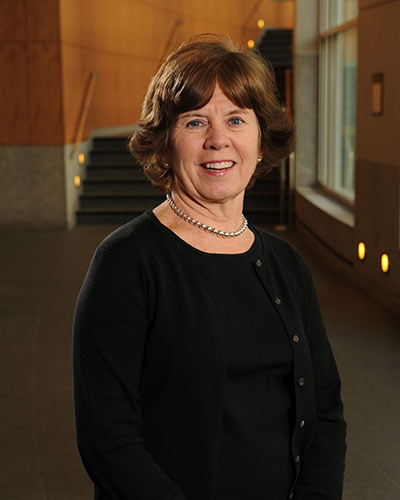September 09, 2019

New finding from the University of Maryland School of Medicine notes sharp rise in obesity rates in preschoolers from low-income households regardless of ability to access nutritious foods
Young children, who grow up in homes with limited access to nutritious foods (known as food insecurity), are more likely to experience poor overall health, hospitalizations, and developmental problems, but they are not at higher risk of developing obesity, a new University of Maryland School of Medicine study finds. The research, published today in the journal Pediatrics, examined the impact of food insecurity among children from birth to age four and found that obesity rates generally did not differ among those who lived in households with food insecurity compared to those who had access to healthy foods.
“We did find, however, that growing up in a low-income community -- typically with a lack of access to healthy grocery stores, an overabundance of fast food chains, and few safe areas to play outdoors – increased a preschooler’s risk of developing obesity regardless of food security,” said study leader Maureen Black, PhD, a Professor of Pediatrics at UMSOM. “This is quite alarming and indicates a significant public health issue.”
She and her colleagues analyzed data from 28,184 racially and ethnically diverse children under four years of age primarily from low-income households in five U.S. cities that participate in Children’s HealthWatch, an ongoing network of pediatric and public health researchers that monitors how economic hardships relate to the healthy development and growth of children. Data were stratified by every year of age from birth to one year and up to four years of age, and the researchers found that food insecurity was not associated with a higher risk of obesity with one exception. Children aged two to three years who lived in households that were food insecure had a 24 percent increased risk of obesity compared to those who lived in households that were food secure. However, those from the poorest households, where both parents and children lacked access to proper nourishment, also did not experience higher rates of obesity.
“I am not sure what to make of this finding,” said Dr. Black. “It could be this is the time when toddlers are first trying adult foods, which in food insecure households may be low-cost, low nutrient-dense foods. In addition, pickiness and hesitancy to try new foods peak during this age period and may be associated with excess snack food.”
About 27 percent of the children in the study lived in households that had food insecurity, including more than 13 percent in extremely deprived households with child food insecurity. The vast majority of households in the study qualified for federal and state food assistance programs that provided supplemental nutrition. The researchers identified food security based on interviews, using a standard questionnaire, with mothers of the children conducted by the Children’s HealthWatch.
Earlier studies examining food insecurity among children under 4 were not stratified by age, potentially masking developmental differences in young children’s experiences of food insecurity and susceptibility to growth issues. This new study found a steady rise in obesity rates as the children grew out of infancy: about 13 percent of those ages 1 to 2 years were obese compared to nearly 24 percent of those ages 3 to 4.
“Childhood obesity remains a persistent problem in this country, and we know it has led to earlier onset of high blood pressure and type 2 diabetes. These conditions, once rare in teenagers, now occur regularly in adolescents,” said E. Albert Reece, MD, PhD, MBA, Executive Vice President for Medical Affairs, UM Baltimore, and the John Z. and Akiko K. Bowers Distinguished Professor and Dean, University of Maryland School of Medicine. “More public health efforts must be made to ensure that children in low-income communities are getting the proper nutrition they need.”
While the study did not find a link between food insecurity and obesity risk, it did find that food insecurity was associated with significantly increased risks of a child being in poor health and experiencing a developmental delay, with the odds increasing with a child’s age up to age four. For this reason, the study authors recommended that health care providers follow the American Academy of Pediatrics guidelines to screen and manage food insecurity, which involves asking caregivers about their access and concerns about enough food and providing them with access to government food assistance programs like WIC, SNAP and local food pantries, along with supports to help families cope with economic hardships and associated stressors.
Dr. Black, who is also a fellow at RTI International, conducted the study with colleagues at Boston University, Drexel University, University of Arkansas for Medical Sciences, and Hennepin County Medical Center. Chloe Drennen, MD, a 2019 UMSOM graduate, was the first author of the study. The study was funded by multiple foundations and donors that support Children’s HealthWatch.
About the University of Maryland School of Medicine
Now in its third century, the University of Maryland School of Medicine was chartered in 1807 as the first public medical school in the United States. It continues today as one of the fastest growing, top-tier biomedical research enterprises in the world -- with 43 academic departments, centers, institutes, and programs; and a faculty of more than 3,000 physicians, scientists, and allied health professionals, including members of the National Academy of Medicine and the National Academy of Sciences, and a distinguished recipient of the Albert E. Lasker Award in Medical Research. With an operating budget of more than $1 billion, the School of Medicine works closely in partnership with the University of Maryland Medical Center and Medical System to provide research-intensive, academic and clinically based care for more than 1.2 million patients each year. The School has over 2,500 students, residents, and fellows, and more than $530 million in extramural funding, with most of its academic departments highly ranked among all medical schools in the nation in research funding. As one of the seven professional schools that make up the University of Maryland, Baltimore campus, the School of Medicine has a total workforce of nearly 7,000 individuals. The combined School and Medical System (“University of Maryland Medicine”) has an annual budget of nearly $6 billion and an economic impact more than $15 billion on the state and local community. The School of Medicine faculty, which ranks as the 8th highest among public medical schools in research productivity, is an innovator in translational medicine, with 600 active patents and 24 start-up companies. The School works locally, nationally, and globally, with research and treatment facilities in 36 countries around the world. Visit medschool.umaryland.edu
Contact
Office of Public Affairs
655 West Baltimore Street
Bressler Research Building 14-002
Baltimore, Maryland 21201-1559
Contact Media Relations
(410) 706-5260
Related stories

Friday, December 18, 2020
Low-Income Preschoolers Exposed to Nurturing Care Have Higher IQ Scores During Their Teen Years, Landmark Study Finds
Preschoolers living in impoverished communities who have access to a nurturing home environment have significantly higher intelligence quotient (IQ) scores in adolescence compared to those raised without nurturing care. That is the finding of a new international study conducted by University of Maryland School of Medicine (UMSOM) researchers, which examined data from more than 1,600 children who were followed from birth through their teenage years. Results were published this week in The Lancet Child & Adolescent Health journal.

Monday, July 24, 2017
Civil Unrest After Freddie Gray's Death Harms Health in Baltimore Mothers
The April 2015 civil unrest associated with Freddie Gray’s death while in police custody caused a significant spike of stress in mothers of young children living in affected neighborhoods, according to new research from the University of Maryland School of Medicine (UM SOM).
